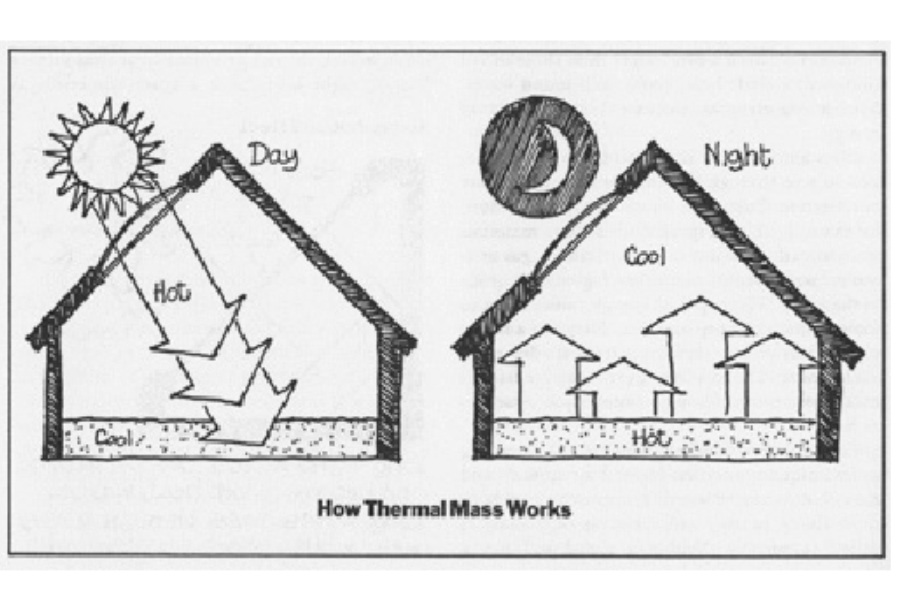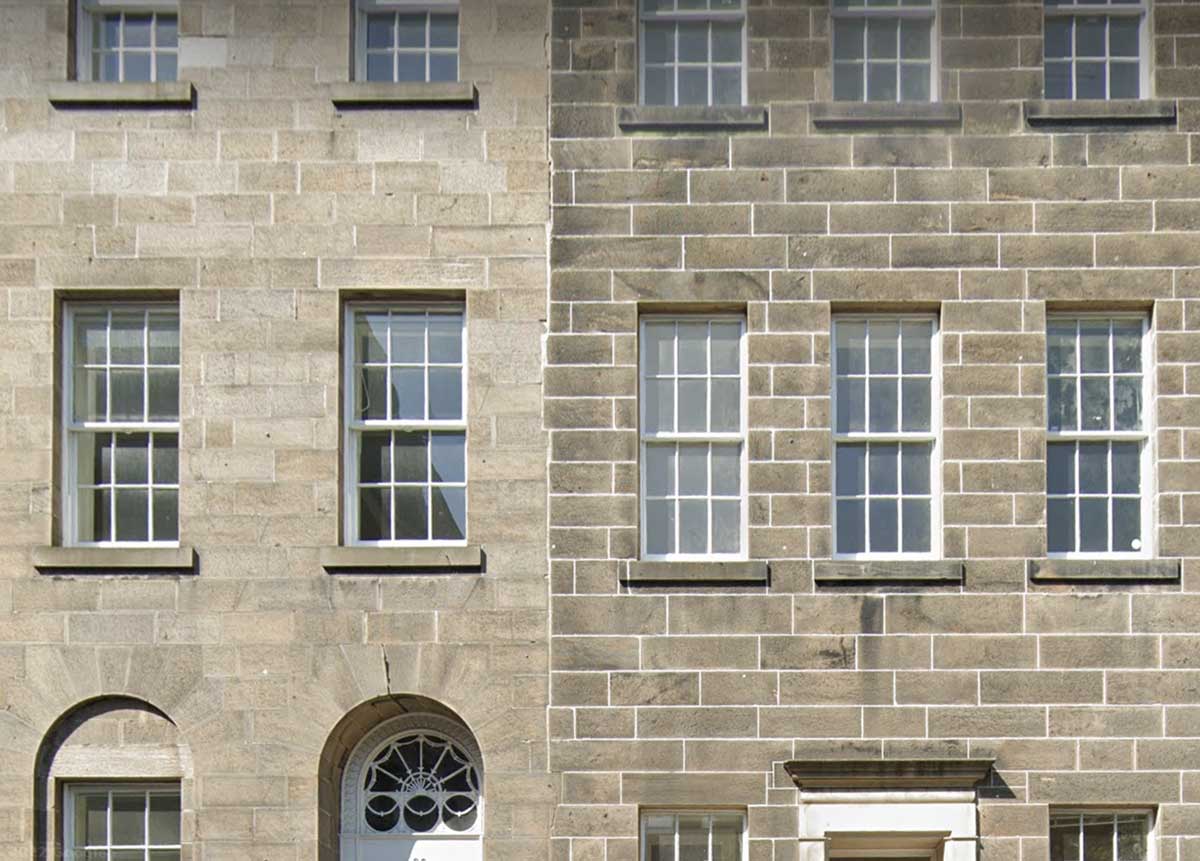- Home
- Scotland's changing climate
- Urban Housing in Scotland
- Maintenance
- Ventilation
- Airtightness
- Insulation
- Lofts - insulation at ceiling level
- Lofts - insulation at rafter level
- Cavity wall insulation
- Solid Walls: Internal vs External Insulation
- Internal Solid Wall Insulation (IWI)
- External Solid Wall Insulation (EWI)
- Timber frame retrofit
- Windows and doors
- Openings in 'historical' buildings
- Openings in 'non-historical' buildings
- Ground floors
- Suspended floors
- Suspended floors - from below
- Suspended floors - from above
- Solid floors
- Insulation materials
- Building science
- Space heating
- Solar energy
- Product Selector
Thermal Mass
Thermal mass is a very simple principle; it is the ability all materials have to absorb and store heat energy. Generally, denser materials can store more heat and are designed as part of a system; these materials can be deployed to reduce excess warmth (by absorbing and thus 'removing' the heat from the space), store this heat and desorb, or give off this heat again when the surroundings cool down. Managing fluctuation in temperatures like this is valuable, and thermal mass can be used to work interactively with solar gain and conventional heating systems.
Although thermal mass is a simple principle, optimising its contribution to efficient heating systems is much more complicated in practice. The first reason is because it is not houses we are trying to keep warm, but the people within them. Keeping a house warm over long periods when no one is within wastes energy, so perhaps occupancy is the first thing to consider in combination with thermal mass. Simply put, the more people are in the building, the more valuable thermal mass may be. In housing for the elderly or infirm, it may well be a very good idea, but in starter homes for young couples who work and are out most weekends, it may make less sense.
Another aspect is that thermal mass works better where heat is mainly radiant (like direct sunlight) but less well where the heat is convective, i.e., contained in the surrounding air. Since most houses in the UK are heated with radiators, which are unfortunately misnamed and provide about 70% of their heat convectively, thermal mass isn’t as helpful as might be imagined. Linked to this issue is that thermal mass decreases usefulness as air movement increases. Thus, in draughty houses, it doesn’t get a chance to warm up before the heat is whisked away by draughts, while in some energy-efficient and airtight projects, there is so little heat loss that any thermal mass has little to contribute. This is not to say that thermal mass doesn’t have a role to play – most Passivhaus practitioners want to include thermal mass to help with summer overheating. Still, as a principle, it is worth remembering that the more air movement, the less useful thermal mass can be.
It is apparent that to work, thermal mass needs to be available, that is, ‘open’ to the warmth, usually in the air or radiant energy. For this reason, the thermal mass of older masonry walls is of little value if they are covered with a cavity and plasterboard or lath and plaster. In addition, thermal mass is best used as close to the warmth as possible. For example, people often refer to the concrete of a floor slab as being useful thermal mass, while the majority of the warmth in the air is in the upper areas of the room, next to the ceiling. In these cases, thermal mass in the form of dense ceiling boards would be far more effective. Summer sun shining directly onto a solid floor will be absorbed by materials such as tiling and concrete. Still, winter sunshine is better stored by walls, which receive the low-angled winter light more directly.


Traditional Scottish stonework is a ready source of thermal mass if easily accessible from internal spaces.
There are many other aspects to discuss thermal mass adequately. One uses phase-change materials, which can store much more heat energy and thus be used in thinner layers. Another is the use of 'hygroscopic' materials, which absorb both heat and moisture. Clay plasters are a good example of such materials, and by storing both, they can work more effectively, not just for thermal comfort but also for air quality.
Thermal mass is particularly relevant in retrofit because most older houses are made of masonry and so have large areas of potentially suitable thermal mass to use. However, this mass will not be much good if it is covered by internal wall insulation or some other lining, nor will it work if the house is draughty, and in situations with low occupancy, it may not be helpful. Conversely, externally insulated masonry walls in relatively airtight homes with high occupancy can help reduce energy consumption and improve comfort.